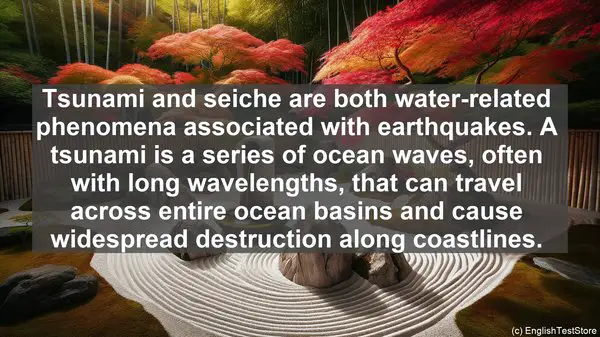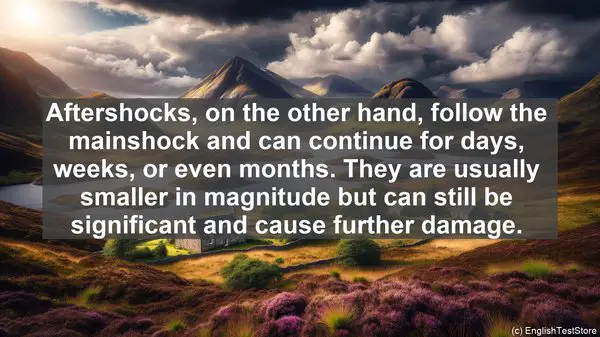Introduction
Welcome to our channel. Today, we have an exciting topic to discuss – the top 10 commonly confused words in earthquake engineering. As students, it’s crucial to have a clear understanding of these terms to excel in this field. So, let’s dive in!
1. Magnitude vs. Intensity
One of the most common confusions in earthquake engineering is between magnitude and intensity. While magnitude measures the energy released at the source, intensity describes the effects felt at a specific location. In simpler terms, magnitude is like the earthquake’s ‘strength,’ and intensity is its ‘impact.’
2. Epicenter vs. Hypocenter
Another pair of words that often causes confusion is epicenter and hypocenter. The epicenter is the point on the Earth’s surface directly above the earthquake’s origin, while the hypocenter is the actual location where the rupture occurs beneath the surface. So, if you imagine the earthquake as a vertical event, the hypocenter is its starting point, and the epicenter is its projection on the surface.
3. Seismic vs. Seismology
Seismic and seismology are related terms but have distinct meanings. Seismic refers to anything related to earthquakes or seismic waves, while seismology is the scientific study of earthquakes, including their causes, effects, and behavior. So, seismic is more of an adjective, while seismology is a specific branch of geophysics.
4. Resonance vs. Amplification
Resonance and amplification are terms used to describe the behavior of structures during an earthquake. Resonance occurs when a structure’s natural frequency matches the frequency of the seismic waves, leading to increased vibrations. On the other hand, amplification refers to the phenomenon where the amplitude of the ground motion increases as it passes through certain types of soil or geological formations.
5. Retrofitting vs. Rehabilitation
Retrofitting and rehabilitation are two strategies used to improve the seismic performance of existing structures. Retrofitting involves adding or modifying structural elements to enhance their strength and stability, while rehabilitation focuses on repairing or restoring the structure’s functionality after earthquake damage. So, retrofitting is more about prevention, while rehabilitation is about recovery.
6. Liquefaction vs. Landslide
Liquefaction and landslide are two different types of ground failures during an earthquake. Liquefaction occurs when saturated soil temporarily loses its strength and behaves like a liquid, often resulting in the sinking or tilting of structures. On the other hand, a landslide is the downslope movement of a mass of soil or rock, which can be triggered by seismic shaking. While both are hazardous, their mechanisms and impacts are distinct.
7. Base Isolation vs. Damping
Base isolation and damping are techniques used in earthquake-resistant design. Base isolation involves placing a flexible or sliding system between the building and its foundation to reduce the transfer of seismic energy. Damping, on the other hand, refers to the dissipation of energy within a structure, often through the use of specialized materials or devices. Both techniques aim to reduce the structure’s response to earthquake forces, but their mechanisms differ.
8. Aftershock vs. Foreshock
Aftershocks and foreshocks are additional earthquakes that occur before or after the mainshock. Foreshocks precede the mainshock and can provide a warning sign, although not all earthquakes have foreshocks. Aftershocks, on the other hand, follow the mainshock and can continue for days, weeks, or even months. They are usually smaller in magnitude but can still be significant and cause further damage.

9. Tsunami vs. Seiche
Tsunami and seiche are both water-related phenomena associated with earthquakes. A tsunami is a series of ocean waves, often with long wavelengths, that can travel across entire ocean basins and cause widespread destruction along coastlines. On the other hand, a seiche is a standing wave that occurs in enclosed or semi-enclosed bodies of water, such as lakes or bays. While both can be triggered by seismic activity, their characteristics and impacts differ.
10. Shake Table vs. Shake Shack
Okay, this one is a bit of a fun addition! While a shake table is a device used in earthquake engineering to simulate ground motions and test structural models, a shake shack is a popular fast-food chain known for its delicious burgers and shakes. So, if you’re ever in the mood for a tasty meal, remember it’s the shake shack, not the shake table!

